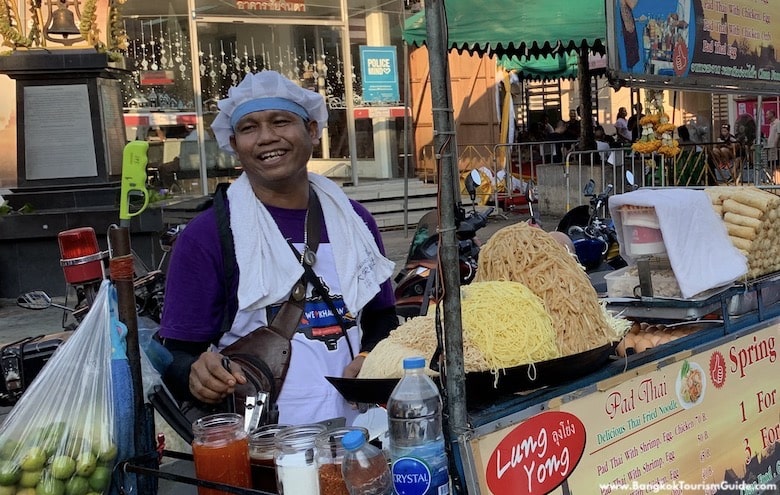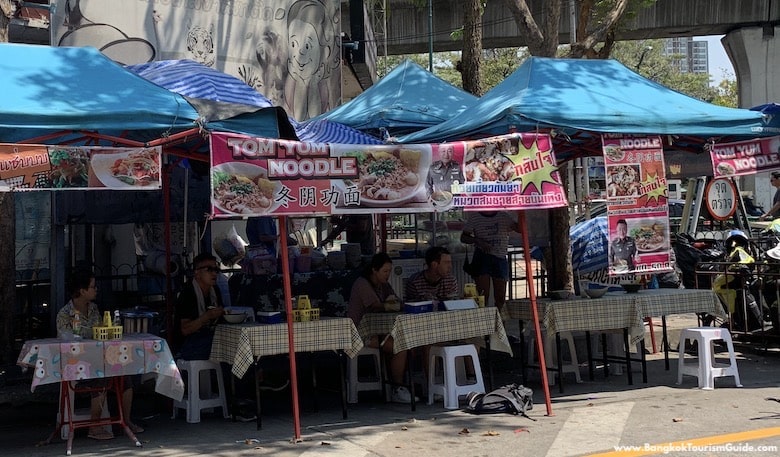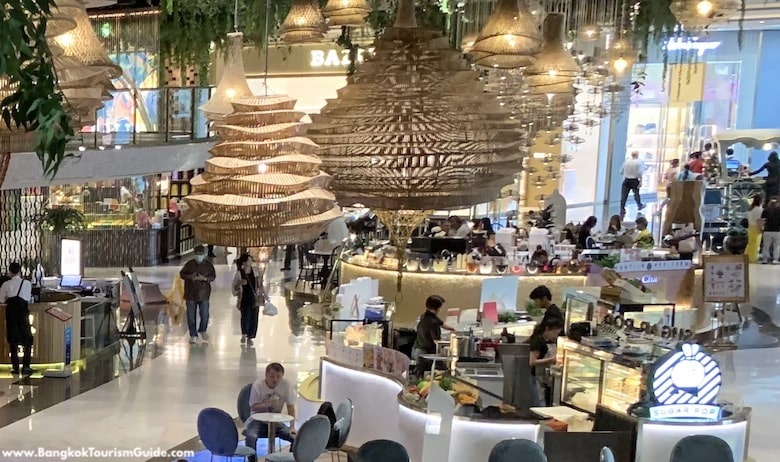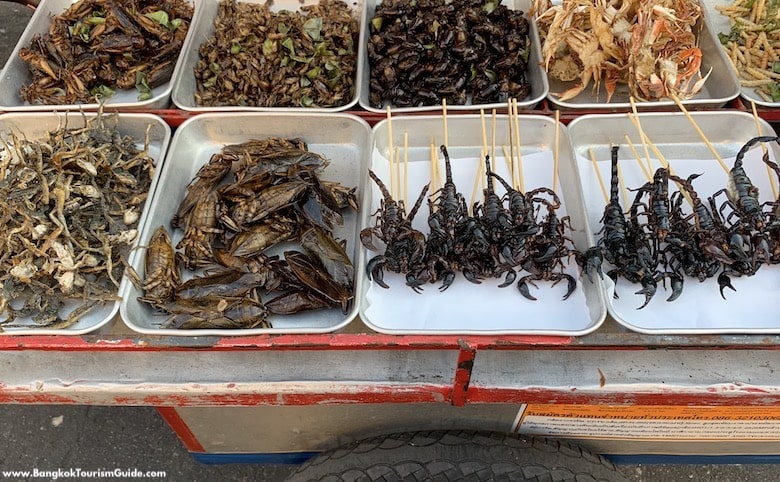
As one of the world’s greatest food cities, Bangkok offers all kinds of flavors and aromas. Even the pickiest eaters are tempted to try the pungent street food, where the salty and the sweet, the spicy and sour, are often tasted in one single bite. Then there are the traditions brought from other parts of the world, and eating becomes one of the city’s main activities. There are influences from China, Malaysia, Myanmar, Indonesia, and even from as far away as Portugal, whose 16th-century traders and missionaries introduced tomatoes, potatoes, lettuce, chillies, papayas, guavas, and other staples. The Portuguese also brought new cooking techniques, and particularly sweets, reflected in many of the pastries sold at traditional Thai markets and especially around the Church of Santa Cruz in Bangkok.
The Thai diet is based on rice and noodles, and just about any meal isn’t complete without them, usually accompanying main dishes. Any time is a good time for a meal, and just about anything can be eaten first thing in the morning or at night. Fish and pork are the most popular proteins, but you’ll also find chicken. Beef, however, is quite rare.
Most restaurants include English descriptions, and sometimes other languages. If there is no menu, you’ll see a display of the dishes of the day.
Street Food

Bangkok is Asia’s outdoor dining capital and the world’s great street food city. There’s no escaping the mix of aromas as you walk around, as locals (and adventurous tourists) have their convenient, cheap, and usually delicious meals on the side of the road. Most vendors (from those with a humble cart on a street corner to those at the stalls in busy markets) specialize in one dish, from the popular pad Thai to a more exotic red pork on rice. The best streets to try them all are in Chinatown (especially down Yaowarat Road) and Bang Rak (between the Saphan Taksin station of the BTS SkyTrain and the junction of Charoen Krung and Silom Road) -- just don’t go on a Monday, when many vendors take the day off.
Fruit and Juices
Thailand’s variety of fruit, such as durian, lychee, mango, papaya, and watermelon, is blended into juices and smoothies, or sold sliced as snacks on the streets or the floating markets. They’re also served as desserts (mostly mango and coconut).
Food Courts

Bangkok’s mall-based food courts are stylish and inviting, and perfect for inexpensive meals. Clean, and with English-language menus, they’re naturally the choice of many tourists. Yes, you’ll find many of the international names you’re familiar with, but also branches of local restaurants. The best ones are in the Siam Paragon, MBK, Central Embassy, Central World, and Siam Center malls.
See the guide to the best malls in Bangkok.
Food Tours and Cooking Classes

Foodies or anyone who wants to know more about Thai cuisine may join a food tour or a cooking class. Those may include visits to local markets or professional schools, and may be done in groups or in private. Take a look at all the options:
-Food Tours
-Cooking Classes
